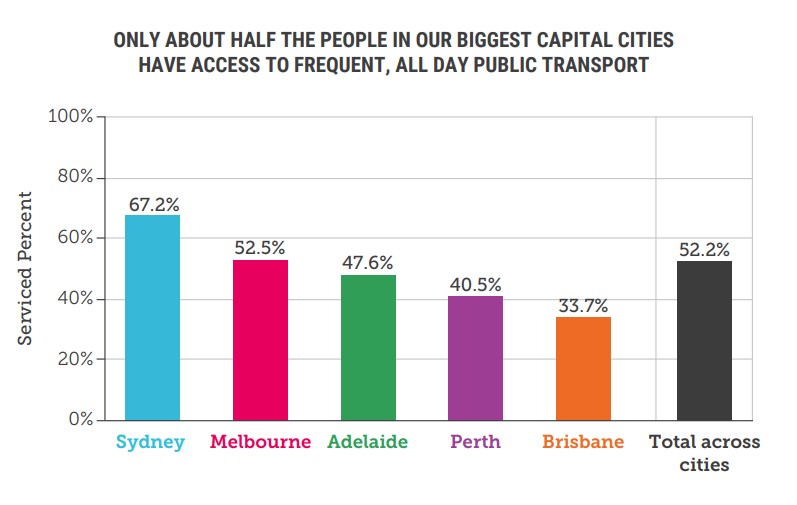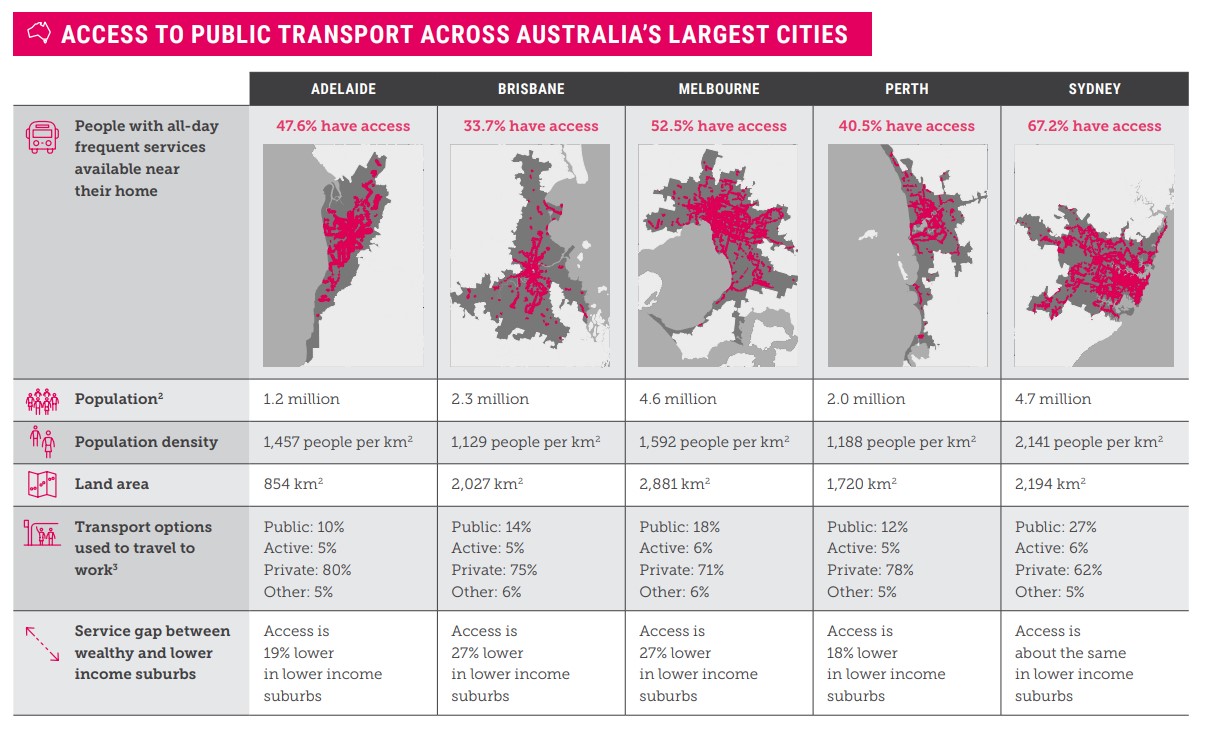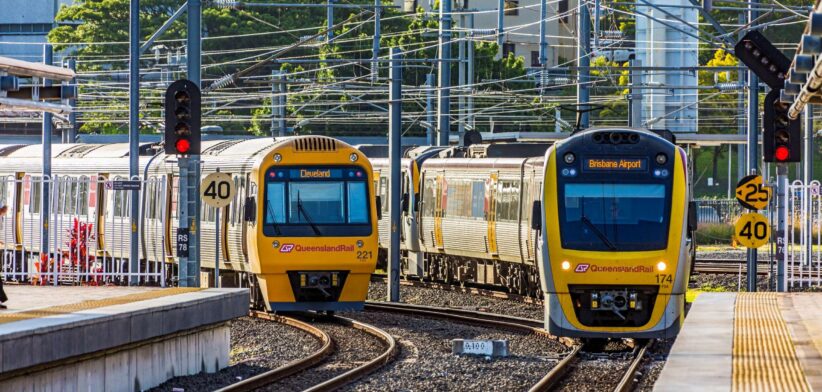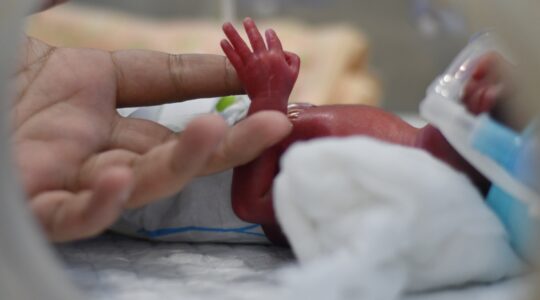Brisbane residents have the lowest access to frequent, all-day public transport of all major Australian cities, according to a report released today.
The Climate Council report shows less than 34 percent of Brisbane residents have access to regular public transport, well behind Sydney (67.2 percent), Melbourne (52.5 percent), Adelaide (47.6 percent) and Perth (40.5 percent).
Climate Council Head of Policy and Advocacy Dr Jennifer Rayner said more than 7 million Australians living in the five biggest cities didn’t have access to frequent, convenient and reliable public transport options.
Dr Rayner said this stopped Australians choosing to use public transport more often, a form of transport that could slash living costs and climate pollution at the same time.
She said the minimum level of public transport service required to get people out of cars ran every 15 minutes between 7am-7pm and within 800m of their homes, with the Climate Council report, Next Stop Suburbia: Making Shared Transport Work for Everyone in Aussie Cities, revealing only about half of those living in Sydney, Melbourne, Brisbane, Adelaide and Perth had access to this level of service.
“Nobody likes getting stuck in traffic, but that’s where our transport options have us stranded. Convenient, frequent and reliable transport empowers Aussies travelling anywhere in our cities, at any time of the day, to simply ‘turn up and go’ from point A to B.
“We have a big opportunity to improve our cities by giving more Australians the chance to use shared and active transport to travel to work, get to school, go to the doctor and visit loved ones.”
Dr Rayner said more shared and active transport was a win-win for millions of people who lived in the biggest cities.
She said it would slash climate pollution from transport, cut the cost of living, make streets safer and less congested, and clean up the air.
“Shared and active transport should be at the centre of the Federal Government’s upcoming Transport and Infrastructure Net Zero Roadmap plan. That includes setting targets for increased use of shared and active transport in our big cities, and new investment in the services and infrastructure which enable cheaper, cleaner ways of moving around.”
The report also showed access to public transport favoured the most advantaged areas of a city, with 64 percent of those areas, nationally, having regular access, compared to 43 percent in the least-advantaged areas.
In Brisbane, the gap in access between higher and lower-income areas was 27 percent, the worst of the five major cities.










